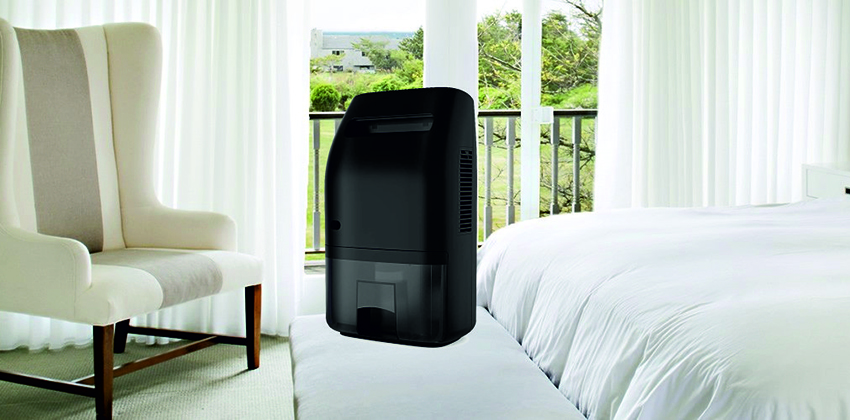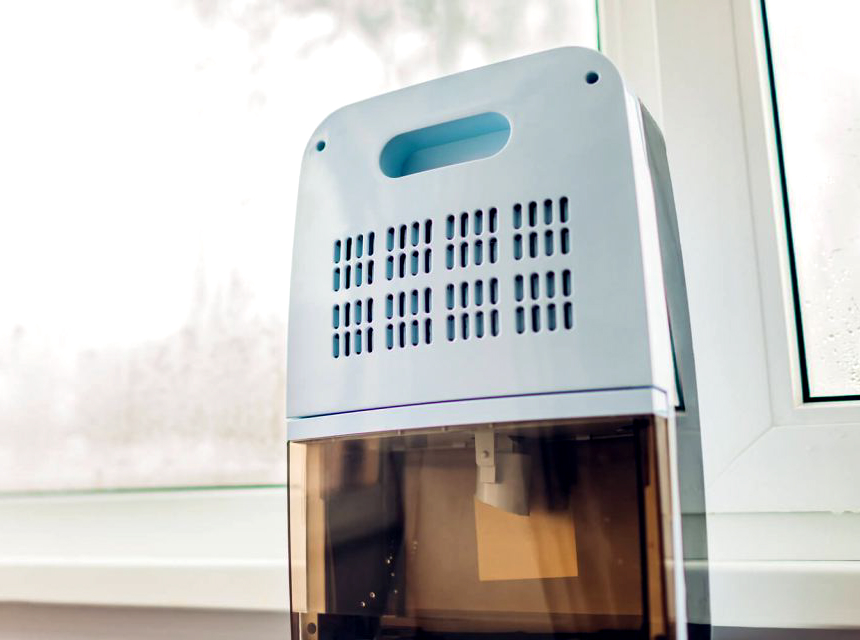

It’s easy to know when you need a dehumidifier because the signs will be there. Some of these are a clammy atmosphere, foggy window panes and, in worst cases, mold and rot. If you live in an especially humid climate, a dehumidifier is a necessary part of your HVAC system.
However, knowing where to place a dehumidifier may not be as straightforward. You have to think of think about the efficiency, safety, and performance of your dehumidifier. And sometimes, you might need to buy a unit designed specifically for that particular room where you want to place it.
Maintaining the interior humidity levels at the ideal 40-60% level isn’t just about comfort. It affects the health of the occupants as well, and it has even been suggested that it can help to slow down the transmission of COVID-19 Trusted Source Opinion | Fight covid-19 by keeping humidity at 40 to 60 percent this winter - The Washington Post Dry air helps the virus spread, but we can fight it. www.washingtonpost.com . Not to forget the pesky mold and mildew that tend to thrive in humid areas such as bathrooms and basements.
As such, learning where and how to place a dehumidifier is about protecting yourself and your family or colleagues.
Just like HVAC vents or overhead fans, a dehumidifier is often placed on an as-needed basis. Unless you live in Florida or Mississippi, it may not be necessary to install a whole-house dehumidifier. The AC in your home or building already plays a large role in regulating humidity levels.
However, some common places are known trouble spots. These include kitchens, basements, crawl spaces, and bathrooms. Here are some of them and how you can position a dehumidifier appropriately in each one.
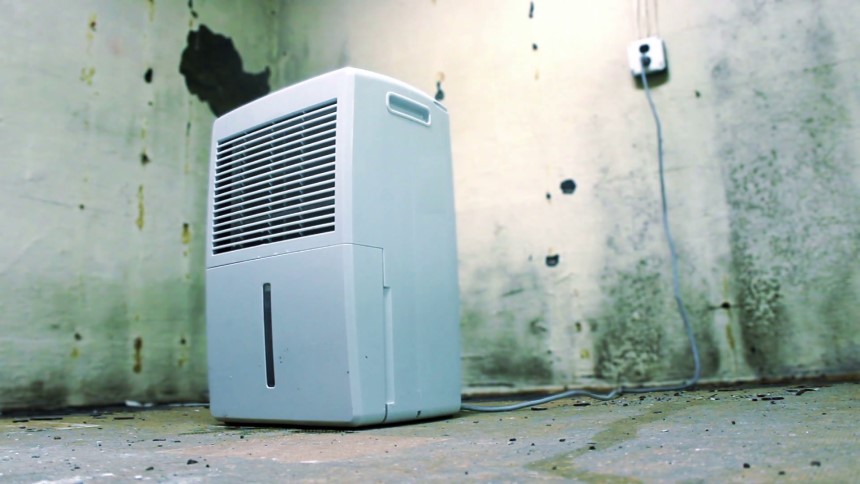
However, these factors are also what make placing a dehumidifier in your basement so easy. For one, you don’t have to worry about keeping it out of sight, and there is almost always a drainage system you can drain it out of.
The best place to place a dehumidifier in your basement is the center of the room. Due to poor air circulation, central positioning gives it maximum airflow and keeps it out of the rest of the clutter.
You will want to make sure that you have the right unit that can serve such a large and humid space. One such option is the HomeLabs Dehumidifier which is designed for large rooms and basements of up to 4,500 square feet. The unit has a rated capacity of 50 pints of water removed from the air per day, thanks to its high airflow capacity. Plus, it’s very quiet!
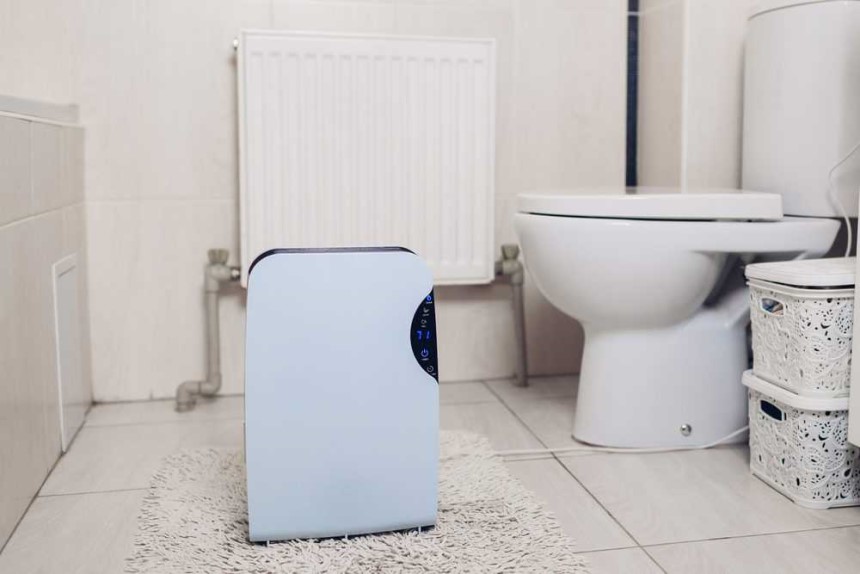
There are small portable units designed specifically for the bathroom which you can place on a shelf. There they remain accessible while being in a safe place. Other options are:
You will likely only need to run your bathroom dehumidifier for about 20 minutes after a shower each day, so you don’t have to worry too much about getting large sophisticated units.
Like your bathroom, the laundry room requires special consideration when locating a good spot for placing your dehumidifier. One key factor lies in positioning the unit away from any laundry vents and from the laundry machines themselves while still ensuring maximum airflow.
If you hang up your wet clothes indoors, the water evaporates and saturates the indoor atmosphere. A dehumidifier will dry the air and help you to get them dry quickly and effectively. In this case, too, choose a unit designed for laundry rooms such as a compressor or desiccant dehumidifier, both of which work super-fast.
 Kitchen
KitchenWith all the cooking and washing going on, it’s natural that your kitchen might need a spot of dehumidification. Even when you have a hood with outside venting, the naturally high temperature in the kitchen means that the air in there holds more moisture which can easily condense in other rooms.
The easiest way to operate a kitchen unit is to have a portable unit you can place onto the kitchen countertop or next to the sink. Some units have a front or top venting, which makes them okay to place beside a wall. The secret to is to put the unit as close to the source of moisture as possible, and also to close windows and doors for faster operation.
It is rare that you will need a dehumidifier in the bedroom or living room unless you live in a truly unforgiving climate. That being said, a house with very high humidity levels feels very uncomfortable, so you may feel a need for one of these units.
If you must have a dehumidifier in your bedroom or living room, start by exploring a whole-house option. These units integrate directly with your HVAC system and work better in regulating humidity than indiscriminately sucking water out of the air.
Otherwise, a basement or portable dehumidifier can easily reduce the humidity levels below 30%, which in turn because uncomfortable because it dries even your skin, just like interior heating does in winter.
If your current climate control can’t handle the indoor humidity levels, what you need is a high-end whole-house dehumidifier such as the Alorair Commercial Dehumidifier. As one of the most recommended options out there, the Alorair has an automated system with an inbuilt hygrometer that allows it to only kick in when the humidity levels rise above a certain level.
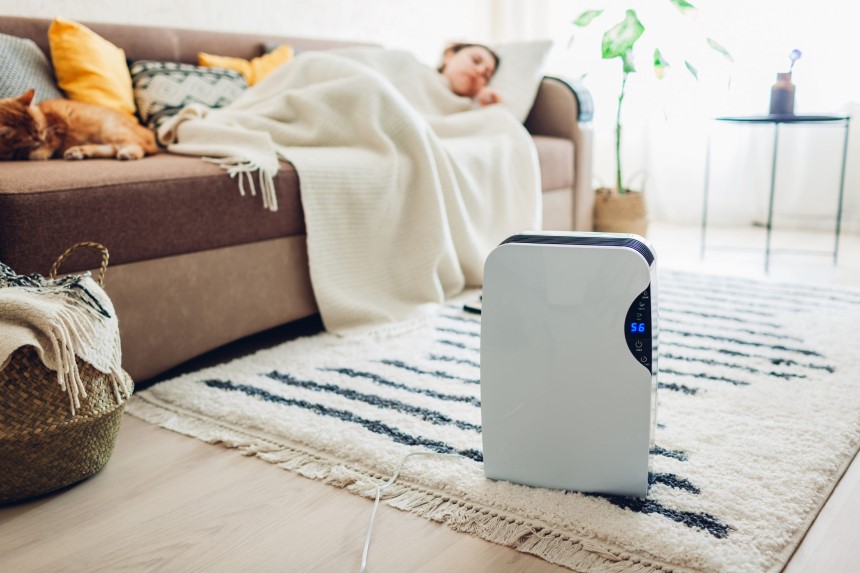 Garage
GarageA well-ventilated would ideally have no need for dehumidification. However, most garages aren’t served by HVAC units, so it makes sense that you want to dry them up once in a while to prevent condensation and “sweating.”
One of the reasons why garages almost always smell musty is due to this lack of ventilation and moisture build-up. Even your car contributes to the humidity problem, which is why an automatic dehumidifier is important for your garage.
An automatic unit in your garage will kick in whenever the humidity levels rise above a certain pre-set level, which makes it super convenient and helps to save on energy costs. Another factor you need to consider is the size of your garage, where you need a unit that is powerful enough to handle the area.
Not to worry, though, we did a write on the best dehumidifiers for garages as well to help you choose. While it may not be practical to have a unit in the center of the space, the important thing is to place your dehumidifier away from corners, other appliances, dusty areas, and anywhere you won’t want water to drip and collect. Make sure to install a drainpipe to make it a truly fit-and-forget device.
Sometimes your humidity problems are so bad that you find yourself wondering, “do I really need a dehumidifier for every room?” The good news is that, no you don’t. If your indoor humidity is not a localized problem restricted to rooms such as the basement or bathroom, a whole-house unit might be what you need.
Your HVAC and climate control system should be your first line of defense against humidity, but anyone who has lived in Florida or other hot and humid areas can tell you that this doesn’t always work. Whole-house dehumidifiers work in tandem with the in-house HVAC unit and remove excess moisture from the air to keep things comfortable.
Due to the amount of work they have to do, whole-house dehumidifiers are usually large commercial units capable of removing more than a hundred pints of water from the air, every day. Such units don’t come cheap, easily exceeding $1,000 for purchase and installation. However, they will get rid of your high humidity problems once for all.
What makes this an even more ingenious solution is that a whole-house unit works through the same HVAC supply vents. It draws in air from the main HVAC unit’s return plenum, strips it of moisture, and returns the dry air through the same vents. This is called a return-to-return installation, although you can also give the unit independent vents.
Whichever mode of installation you find is best, all you need to do is make sure that you choose the best and most reliable whole-house dehumidifier unit for your needs.
It’s not very difficult to find the right place to place a dehumidifier in crawl spaces. These usually small and enclosed places can do with a small unit. However, the problem is that most people don’t consider installing a dehumidifier in crawl spaces until it’s too late.
Even if you don’t use your crawl space and nobody ever goes in there, it is still important to monitor the humidity level in such spaces under the stairs and even in the attic. Humidity levels greater than 55% can cause black mold to grow, which is a health hazard.
High humidity levels also encourage wood rod, metal corrosion, and the presence of pests, all of which threaten the integrity of your house’s support structures.
This means that the right humidifier in your crawl spaces is necessary to keep your house habitable. All you need to do is:
Deciding where in a particular room to place a dehumidifier is more than a matter of opinion, though. There are several features to consider so that you ensure the unit will achieve maximum efficiency.
When the signs of condensation start to show up, you know it’s time to install dehumidifier units to make your house livable. However, you will need to learn about the best practices recommended by experts to ensure that you install your unit in the right place.
It is also important to remember that dry indoor air is also unsafe and uncomfortable for occupants. If you don’t have a unit with a hygrometer installed, make sure to pick up one and use it to ensure that you know where to place your dehumidifier unit and how low to run it.
If it gets too dry, you can always put out a basin of water to add air moisture. After all, the key is balance and ensuring that your indoor humidity stays between 30-50% all the time.


